Abstract
Salt tolerant spinach (Spinacia oleracea) and salt sensitive pea (Pisum sativum) plants were exposed to mild salinity under identical growth conditions. In order to compare the ability of the two species for extra- and intracellular solute compartmentation in leaves, various solutes were determined in intercellular washing fluids and in aqueously isolated intact chloroplasts. In pea plants exposed to 100 millimolar NaCl for 14 days, apoplastic salt concentrations in leaflets increased continuously with time up to 204 (Cl−) and 87 millimolar (Na+), whereas the two ions reached a steady concentration of only 13 and 7 millimolar, respectively, in spinach leaves. In isolated intact chloroplasts from both species, sodium concentrations were not much different, but chloride concentrations were significantly higher in pea than in spinach. Together with data from whole leaf extracts, these measurements permitted an estimation of apoplastic, cytoplasmic, and vacuolar solute concentrations. Sodium and chloride concentration gradients across the tonoplast were rather similar in both species, but spinach was able to maintain much steeper sodium gradients across the plasmamembrane compared with peas. Between day 12 and day 17, concentrations of other inorganic ions in the pea leaf apoplast increased abruptly, indicating the onset of cell disintegration. It is concluded that the differential salt sensitivity of pea and spinach cannot be traced back to a single plant performance. Major differences appear to be the inability of pea to control salt accumulation in the shoot, to maintain steep ion gradients across the leaf cell plasmalemma, and to synthesize compatible solutes. Perhaps less important is a lower selectivity of pea for K+/Na+ and NO3−/Cl− uptake by roots.
Full text
PDF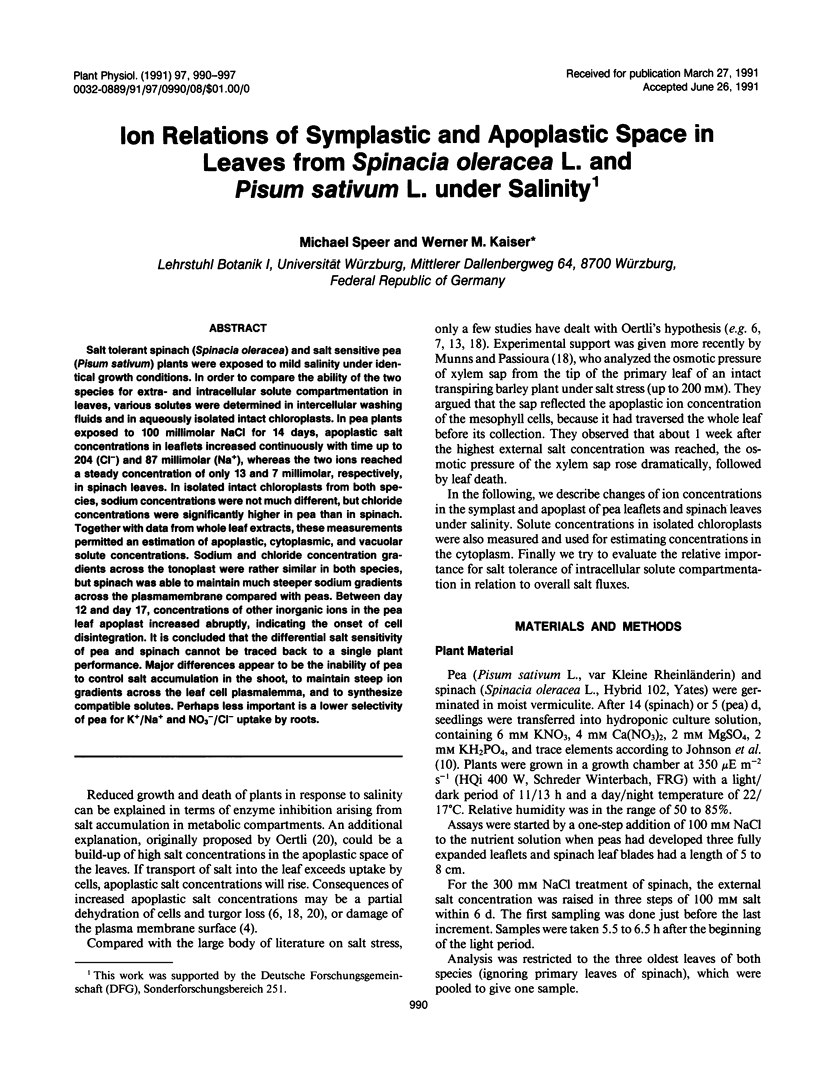
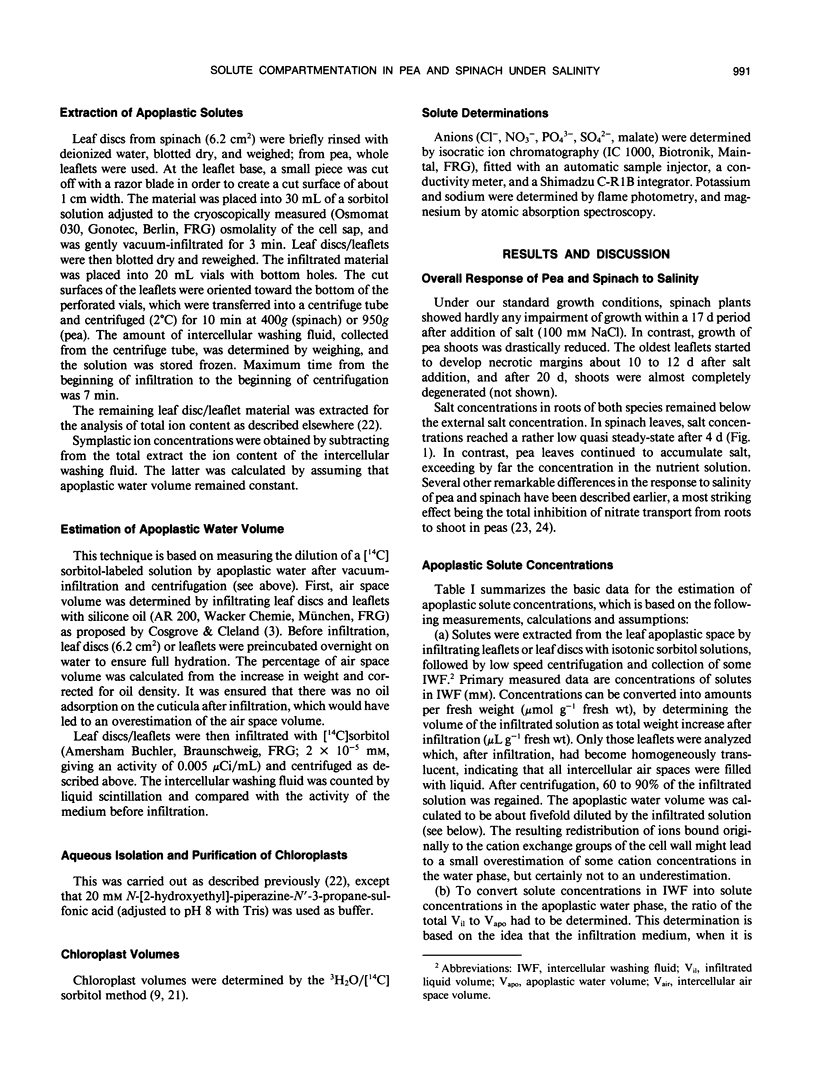

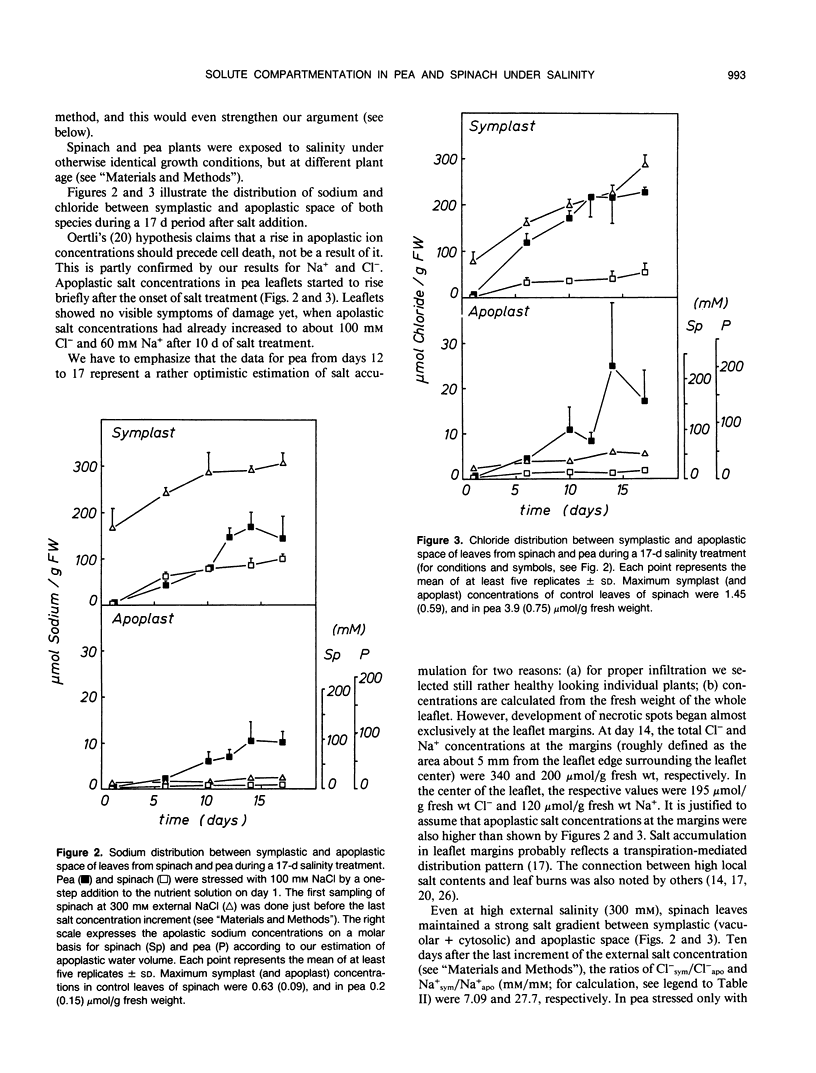
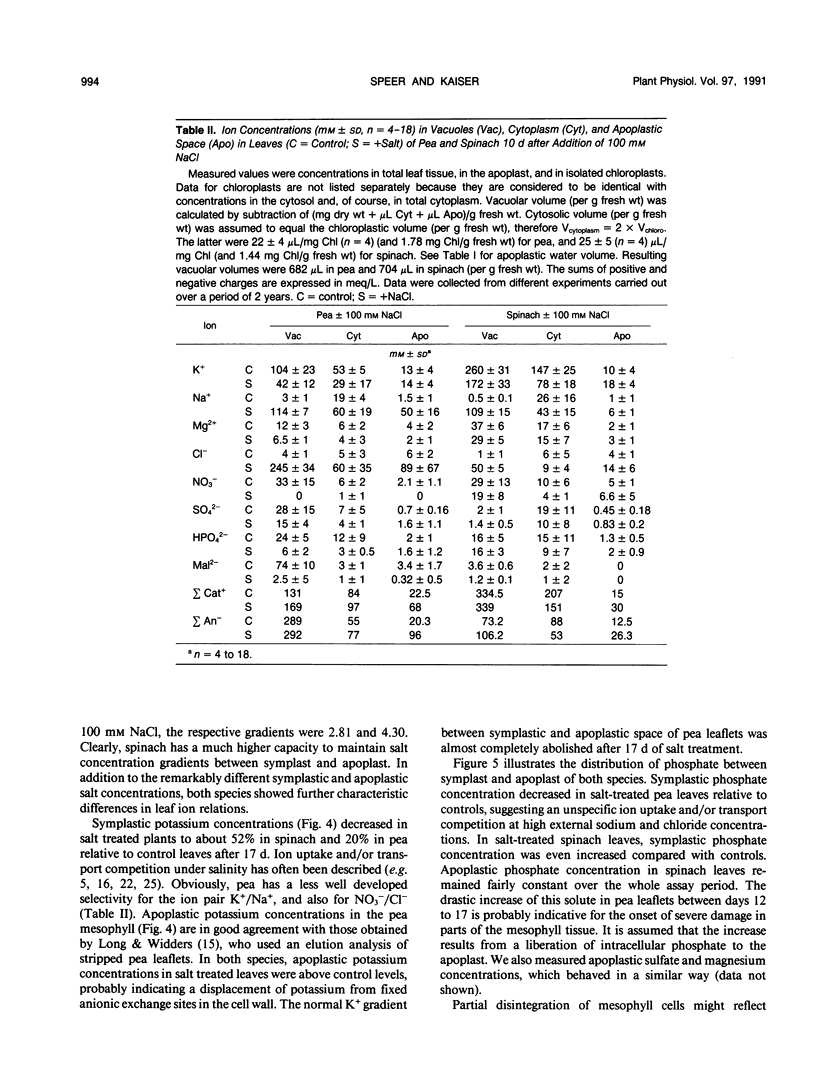
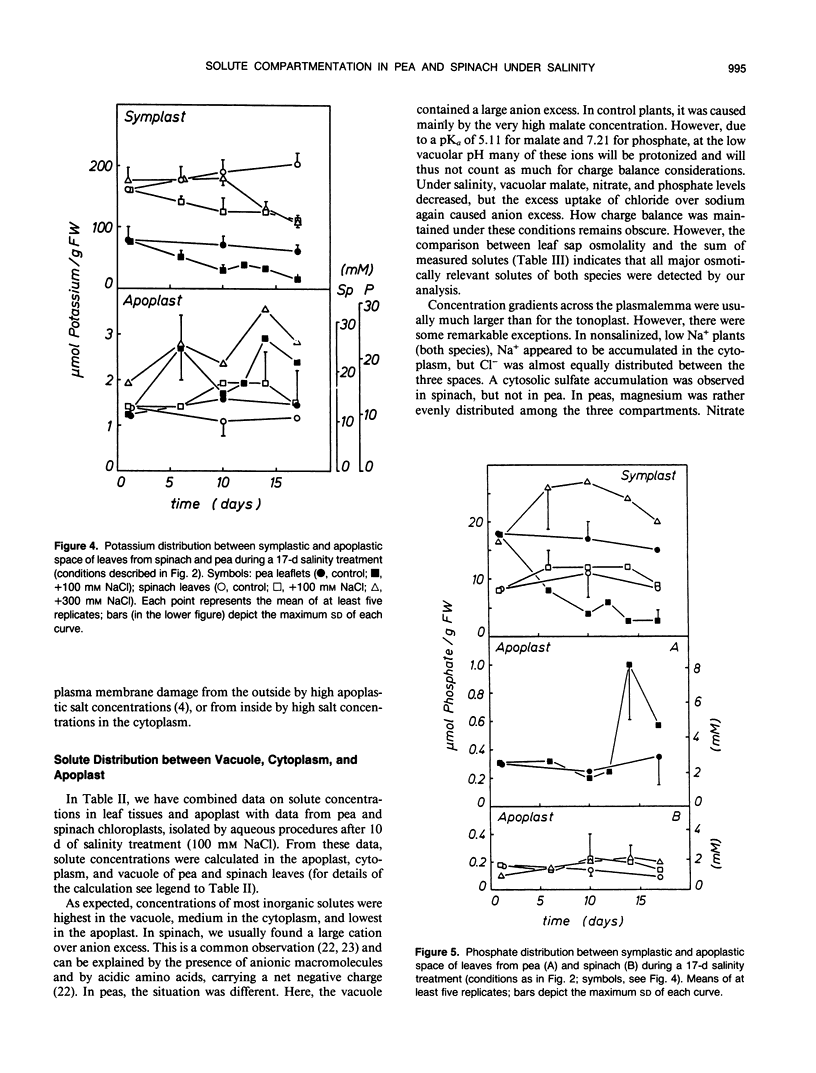


Selected References
These references are in PubMed. This may not be the complete list of references from this article.
- Cosgrove D. J., Cleland R. E. Solutes in the free space of growing stem tissues. Plant Physiol. 1983 Jun;72(2):326–331. doi: 10.1104/pp.72.2.326. [DOI] [PMC free article] [PubMed] [Google Scholar]
- Cramer G. R., Läuchli A., Polito V. S. Displacement of ca by na from the plasmalemma of root cells : a primary response to salt stress? Plant Physiol. 1985 Sep;79(1):207–211. doi: 10.1104/pp.79.1.207. [DOI] [PMC free article] [PubMed] [Google Scholar]
- Heldt W. H., Werdan K., Milovancev M., Geller G. Alkalization of the chloroplast stroma caused by light-dependent proton flux into the thylakoid space. Biochim Biophys Acta. 1973 Aug 31;314(2):224–241. doi: 10.1016/0005-2728(73)90137-0. [DOI] [PubMed] [Google Scholar]
- Long J. M., Widders I. E. Quantification of Apoplastic Potassium Content by Elution Analysis of Leaf Lamina Tissue from Pea (Pisum sativum L. cv Argenteum). Plant Physiol. 1990 Nov;94(3):1040–1047. doi: 10.1104/pp.94.3.1040. [DOI] [PMC free article] [PubMed] [Google Scholar]
- Robinson S. P. Osmotic adjustment by intact isolated chloroplasts in response to osmotic stress and its effect on photosynthesis and chloroplast volume. Plant Physiol. 1985 Dec;79(4):996–1002. doi: 10.1104/pp.79.4.996. [DOI] [PMC free article] [PubMed] [Google Scholar]
- Schröppel-Meier G., Kaiser W. M. Ion Homeostasis in Chloroplasts under Salinity and Mineral Deficiency : I. Solute Concentrations in Leaves and Chloroplasts from Spinach Plants under NaCl or NaNO(3) Salinity. Plant Physiol. 1988 Aug;87(4):822–827. doi: 10.1104/pp.87.4.822. [DOI] [PMC free article] [PubMed] [Google Scholar]


